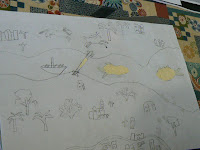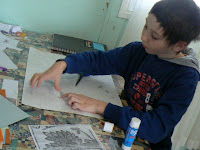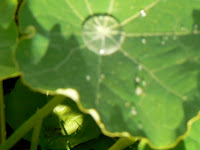
We are continuing to use "Say Fellas" by Wade C.Smith as part of our learning in Values and moral character. The boys and I like the way the stories are written. Some of the vocabulary is a little dated and sometime requires explanation but the meaning behind each story is very clear.Also they are "just long enough" without over"hammering" their message. Here is sample for you.We downloaded the stories from
this siteXIV
FIGHTING
Say, fellows! of all the boys in the Old Testament, David is my choice. There was something about that chap that was "real class."
If David were to happen in your bunch, doubtless when you got to knowing him every one of you would want him for a chum. He was the kind of fellow that real boys like: not a braggart and not a "sissy," but generally when it came to his turn to bat he smashed the ball for a clean hit. Or if he should happen to strike out, he didn't slam the stick to the ground, but with a smile stepped back and turned a handspring and lit on his feet rooting for the next man up. Of course, you know there was not any baseball in those days, but that is about the way David would have played the game.
Out there minding the sheep, David didn't get moody. It might have been a slow job for others, but not for him. No, he had a harp and he made music with it. He had a sling, and could hit a quarter on a telegraph pole with it—if there had been quarters and telegraph poles. But there were other things to use that sling on, and
they gave David a touch of real life.
David knew that lions, bears, and wolves lurked in the forests near the pastures in which his sheep must graze, and he got ready for them. Notice, fellows, here is one of the secrets of David's success: he was always ready. His big opportunity came when he arrived at King Saul's camp on that errand for his father, and he was ready for it.
He was ready, first, because he believed God's power was greater than any army, and that God would fight for any one who fought for Him. Did you notice in the Bible account how David told the king that God would handle the matter; and how he also told Goliath out there on the field, while all men held their breath, that it was Goliath plus sword, spear, and shield, against David plus God?
And so God helped. One smooth stone, the first out of the sling, crunched through that big bluffer's head like a baseball through a stained glass window, and the Philistine fell on his face. Everybody's giant comes some day. Every fellow's big opportunity comes one time, at least, and he can be just as ready for it as David was.
That's the big news to-day.
I like to think of the five smooth stones as representing five characteristics of David's readiness.
First Stone: (the one he slung) Faith. We have been talking about that—faith in God. David prayed as he picked up those stones, you know he did.
Second Stone: A pure heart. God searched it that day at Bethlehem and approved him for anointing. David was clean. You would never hear him telling smutty stories, nor did he think them.
Third Stone: Industrious habits. Think of his skill in playing the harp, and his effectiveness with that deadly sling.
Fourth Stone: A courageous spirit. A lion's mane, a bear's skin, and a giant's head, of which we know, bear testimony to this. No wonder the shepherd boy could stand before a king and reason with him in the presence of a national crisis.
Fifth Stone: A humble spirit. Listed last, but not least by a good deal. "Thy servant will go and fight this Philistine"; "Thy servant kept his father's sheep and—" "The Lord will" do this thing—not I. David's humility throughout his boyhood and young manhood—indeed throughout his whole life—is one of the fine and strong points of his character.
In the brook that runs alongside your lives, fellows, these five smooth stones and others are waiting for each one of you. Put them in your "scrip" now and be ready for life's opportunities; for they are coming, head on, to meet you, and God wants to be on your side.Read the seventeenth chapter of 1 Samuel.

 We use unlined artist notebooks for much of our schoolwork. I like that they are spiral bound as it makes turning pages,eve
We use unlined artist notebooks for much of our schoolwork. I like that they are spiral bound as it makes turning pages,eve n bending the book back on itself possible without damaging work. I also like that their durable covers,means you can take
n bending the book back on itself possible without damaging work. I also like that their durable covers,means you can take them anywhere and work in them.
them anywhere and work in them. ps in later years they will also be memory prods as the boys tell back things they still remember of our study of this part of the w
ps in later years they will also be memory prods as the boys tell back things they still remember of our study of this part of the w orld.
orld. As you can see we like maps! We also like putting key words/and or pictures as a summary of what we have discovered. We also add samples of art work and if is not possible because of the size of the piece(such as mosaic work we are doing for this unit)or because the art work was made of a material that would not fit easily into ou
As you can see we like maps! We also like putting key words/and or pictures as a summary of what we have discovered. We also add samples of art work and if is not possible because of the size of the piece(such as mosaic work we are doing for this unit)or because the art work was made of a material that would not fit easily into ou r books(eg pottery)we add photos of the work. P
r books(eg pottery)we add photos of the work. P ictures and titles of books we have read,plus music cd's we have listened to and dvd's watched also find a place in the notebook.
ictures and titles of books we have read,plus music cd's we have listened to and dvd's watched also find a place in the notebook.








































